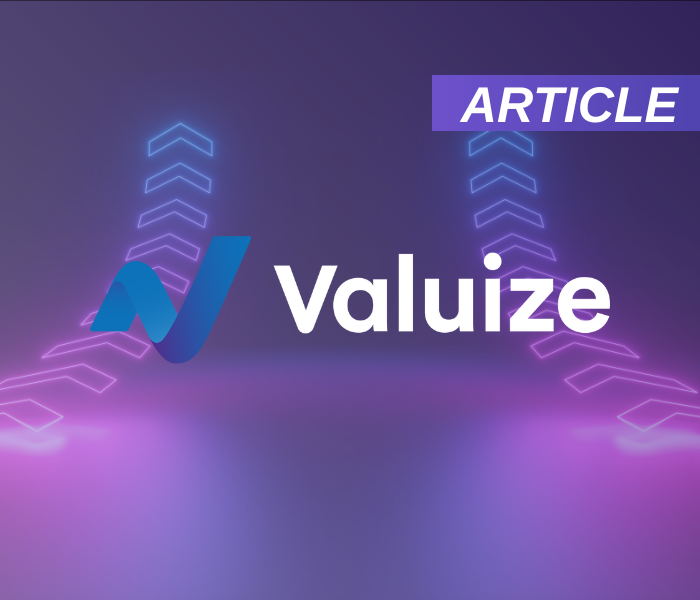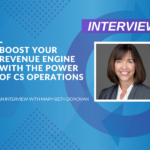Success By The Numbers
For recurring revenue organizations, implementing a measurable digital engagement program for Tier 3 and 4 customers is the foundation for achieving industry-leading Net Dollar Retention. Companies that prioritize customer engagement are shown to move the needle on revenue, customer ratings and share of wallet 2-3X more than companies that neglect engagement (Gallup, 2019).
But, how do you know if your digital engagement program is actually driving impact for your customers and your business?
In this article, we outline how to build a measurement framework around a strong set of metrics that will effectively measure the impact of your digital engagement program and optimize your scale engine for sustainable growth.
Set Expectations From The Start
We can’t stress enough the importance of setting clear expectations with your internal team and stakeholders upfront. Creating and sustaining a successful digital engagement model takes time, and seeing results takes even longer; you may not see significant changes in renewals or expansion after a mere month post-implementation. Therefore, you need to set realistic expectations and clearly communicate this reality to your internal stakeholders. While it ranges based on the size and scale of your program, most companies tend to see results after 2 quarters or 6 months.
At the same time, you should be tracking the measures and outcomes you expect to achieve. These metrics will help you measure the impact of your engagement model, showcase the progress you’re making towards your goals to your executive team and help you secure persistent and continued funding for your scale engine.
Building Your Measurement Program: 5 Key Success Metric Tiers
When you’re trying to measure the impact of your engagement model and drive meaningful customer actions and outcomes at scale, well-defined metrics will be critical to your success. Establish a measurement program around relevant business outcomes, stemming from adoption and customer engagement activities and their respective KPIs, to validate in process alignment to planned business outcomes. Use the following categories as a great guide to getting started:
Foundational Metrics
Begin with a set of foundational metrics that provide visibility into resource readiness and customer coverage, such as content open and read rates, health scores and readiness metrics. Ask yourself candidly: do you have the right resources to engage customers effectively and thoughtfully? Are they enabled in the right places? These measures will serve as the building blocks of your measurement plan and provide the right visibility and accountability to your cross-functional stakeholders.
Leading Indicator Metrics
Leading indicator metrics are the leading measures of the activities within your customer engagement program that are intended to drive long-term outcomes and results. These metrics measure the depth and breadth of customer-focused KPIs in terms of adoption milestones and renewal risk, and drive the achievement of business outcomes.
Impact Metrics
A strong measurement plan is contingent on selecting the right impact metrics from the beginning. These are measures that you can realistically and veritably impact, such as hiring and enablement plans. When it comes to a digital engagement plan, there are certain leading indicators that are important to consider in order to effectively measure your engagement with customers, such as Onboard Cycle Time, Customers Perspective and Service Utilization. If your impact metrics are trending in the right direction, they should drive expected, or direct, business outcomes.
Direct Business Outcomes
Adoption metrics are a top priority when building a digital engagement model because it’s a leading indicator of Gross and Net Retention rates. Focus on your ability to deliver adoption guidance at scale through metrics like health scores, customer engagement, Time to Value and Value Creation examples. If you optimize these metrics by improving customer sentiment and driving product adoption, these should positively influence the next set of important business outcomes; Renewal Rate, Churn and Net Retention.
Indirect Business Outcomes
Your indirect business outcomes are influenced by both impact metrics and adoption outcomes. Factors such as CSAT, NPS and customer engagement are dependent on your ability to successfully drive digital engagement and adoption in your Tier 3 and 4 customers.
Analyze Impact & Adjust Accordingly
As you think about the journey you’re creating for your customers, it’s important to look for the signals, actions and feedback that your customers are sharing. This will allow you to measure the impact of your digital engagement plan on your customer’s health and adoption scores and whether that impact is positive, negative or neutral. If your program is driving a negative or neutral impact, you may need to reach out to the customer directly to discover what’s really going on behind the scenes and pivot your strategy as needed. The data will allow you to clearly identify what is or isn’t working and continually test and iterate so you can ensure you’re sending the right message to the right person at the right time.
At the same time, it’s important not to over-rotate too fast. It takes time for these programs to mature and gain steam and energy. If you send out a new journey and you don’t get an immediate response, that’s okay. Let your program work its magic; it will take some time for your campaign to take effect and for the results to come back. We recommend giving your program at least 2 quarters, or 6 months, before making any changes to your strategy.
Proving The ROI Of Your Digital Scale Engine
The combination of foundational, leading indicator and impact metrics sets the stage for an effective digital engagement measurement plan. Together, they make a strong case for your digital engagement program’s impact, financial viability and value to the overall organization. By strengthening your organization’s digital engagement measurement, you can secure continued investment and enthusiastic support from your senior leadership team.
Are your digital engagement activities actually driving value for your customers? Read our article on the 5 stages of the operational improvement cycle to make your Customer Success organization more effective and efficient.






